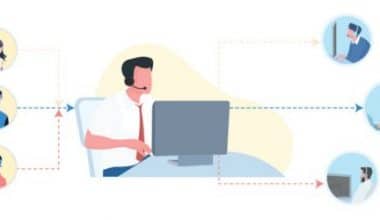A whole lot comes with the term “inflation risk.” It is basically one of the most popular terms in the business world. However, only a few really understand all that it entails. This guide will provide you with all the information you need to know about inflation risk—with at least one example—, its relationship with bonds, and the recent trends in 2023.
Inflation Risk
Firstly, before we proceed into the discussion, let’s look at the meaning of inflation. Inflation refers to how prices of goods and services increase inversely or more than expected. Furthermore, inflation also means the progressive increase in the prices of goods and services in an economy. Economics defines inflation as the general increase in prices and the fall in the purchasing value of money.
It is, however, the effect that inflation breeds. Also, inflation risks are undermining the real value of cash flows made from an investment. However, it is also referred to as “purchasing power.” This means danger to your investment returns, which will be reduced due to the increase in inflation. Rising inflation that causes an increase in prices effectively lowers the real return of a given investment.
Bonds and Inflation Risk
Bonds are defined as a fixed-income instrument that represents a loan by an investor to a borrower. A bond could be thought of as an I.O.U. between the lender and borrower. This typically includes the details of the loan and its payments. Bonds are used by companies, municipalities, states, and sovereign governments to finance projects and operations. The owners of bonds are debt holders, or creditors, of the issuer.
The worst enemy of bonds is inflation risk, as it totally devalues the value of bonds. Also, since bond interest payments are fixed, their value can be eroded by inflation. The longer the term of the bond, the higher the inflation risk. Furthermore, since bonds are subject to interest rate risk, rising rates will result in falling prices (and vice versa) and inflation risk too, and interest rates will respond to inflation. When prices in an economy rise, the central bank typically raises its target rate to cool down an overheating economy.
Inflation also erodes the real value of bonds, which is a particular concern for longer-term debts. Because of these linkages, bond prices are quite sensitive to changes in inflation and inflation forecasts. Some of the risks of inflation to bonds include:
- As stated above, the risk of inflation reduces the value of a shareholder’s coupon interest payment.
- The inverse relationship between interest rates and bond prices It simply means that higher rates equal lower bond prices.
- An increase in short-term interest rates causes inflation risk for bonds.
- Maturity value and a reduction in purchasing power are also signs of inflation risk to bonds
Inflation Risk in 2023
Inflation risk in 2023 is looking more real than ever since the advent of COVID-19, two years into the pandemic. COVID-19 continues to take surprising turns. Consequently, this is disrupting the global economy in multiple sectors, such as public health. Other sectors include work, education, travel, consumer spending patterns, production of goods and services, and international trade flows.
Just as regions were rebounding from the Delta variant, the Omicron variant surfaced. This surfacing of the omicron immediately started sending global COVID-19 infection rates to new levels. Also, as 2023 begins, economies are adapting to the new, highly contagious variant. While considerably milder than previous strains, omicron is dampening supply and demand in regions of effect. This in turn immediately starts to delay the resolution of market imbalances.
Therefore, worldwide inflation risk in 2023 will likely remain near 5.0% in early 2023 before gradually easing in response to declines in industrial and agricultural commodity prices. For the record, on an annual basis, global consumer price inflation picked up from 2.2% in 2020 to 3.8% in 2021 and will average 4.1% in 2023 before subsiding to 2.8% in 2023. However, labor shortages are also contributing to the rise in inflation. In the United States, labor force participation remains below pre-pandemic levels and job vacancy rates have record higher.
Understanding Inflation Risk in 2023
Across Europe, COVID-19 has migrant labor flows. In particular, mainland China’s zero-COVID policy and demographic shifts are restricting labor supply. Wage pressures are most acute in service sectors, where workers are mostly exposed to the COVID-19 virus. Henceforth, the business implications of labor shortages and continuing supply chain disruptions are more automation of labor-intensive processes, near-sourcing of supplies, and a reconsideration of lean inventory policies. Although COVID-19 cannot be the only reason for inflation risk in 2023, you can call it the most popular reason for inflation risk in 2023. Some other reasons include:
- Demand-pull inflation: Demand-pull inflation refers to situations where there are not enough products or services produced to keep up with demand. Henceforth, this causes their prices to increase.
- Cost-push inflation: Cost-push inflation, occurs when the cost of producing products and services rises, forcing businesses to raise their prices as well.
- Built-in inflation: This inflation is sometimes referred to as a “wage-price spiral”. And it occurs when workers demand higher wages to keep up with rising living costs. Also, this in turn causes businesses to raise their prices in order to offset their rising wage costs. Consequently, this leads to a self-reinforcing loop of wage and price increases.
Premium Inflation Risk
The inflation risk premium is simply a measure of the premium investors require for the possibility that inflation may rise or fall more than they expect. However, they expect this to fall over the period in which they hold a bond. It is a method by which an investor calculates the normal rate of return on assets or investments during an inflation period. In other words, it is a part of the prevailing interest rate. This interest rate results from investors’ pushing the nominal interest rates to a higher level to compensate for inflation.
Therefore, the real payoff, which is what investors ultimately care about from holding a nominal asset over some time period, depends on how inflation evolves over that period, and investors will require a premium to compensate them for the risk associated with inflation fluctuations. You, therefore, calculate the actual rate of interest by deducting the premium from the nominal interest rates. The components of the inflation risk premium include the following: Also, note that the inflation risk premium includes three components:
- Risk-free return
- Risk-free rate
- Offset Credit risk
Advantages of Premium Inflation
- It has a bad impact on the investment return rate.
- Big value on investment over time, especially in government bonds.
- In use by market commentators to gauge the expectations of investors
- Moderate rise in inflation risk enables the businesses to increase prices that are commensurate with the increase in their input costs such as raw materials, wages, etc.
- A significant advantage of inflation risk is that it results in more spending by the people, as when prices are increasing, people prefer to spend more in the present on goods and services, which in the future will increase.
- Another type of risk is purchasing power. Inflation risk results in purchasing power risk and results in savings not sufficient enough to meet the goals for which they are intended. In other words, they are leading to falling real income levels
The Disadvantage of Premium Inflation Risk
- There is the price risk that stems from inflation risk; prices of goods and services increase due to an increase in output costs, which is either passed on to customers, resulting in fewer units purchased for the same price or a reduced quantity purchased for the same price. In cases where costs can’t be passed on, it results in downward pressure on the profit margins of the business.
- Inflation risk results in higher borrowing costs for businesses as lenders need compensation not just for the risk of lending but also for the additional that stems from the falling real value of money in the future compared to the present.
- Inflation risk also results in a competitive disadvantage for one country over another as its exports will be lesser, leading to reduced foreign cash inflows.
The formula for the inflation risk premium is thus: inflation premium = YieldTB-YieldIP
Where YieldTB is the yield on a Treasury bond and YieldIP is the yield on a Treasury inflation-protected security of the same coupon rate, redemption value, maturity, etc.
If you already have a nominal rate and a real rate, we can isolate the inflation risk premium using the following equation:
Inflation Premium =1 + nominal rate 11 + Real Rate.
An Example of Inflation Risk
For a better understanding of inflation risk, we would apply examples to better drive home our point. The most common example of inflation risk is popular with bond markets. For investors, bonds are most vulnerable to inflationary risk. Inflation can destroy the net worth of a bond investor. And far too often, once a bond investor notices the problem with their investment, it is always too late.
Lending a fixed sum of money for later repayment is a classic example of inflation risk.
An asset that is subject to inflationary risk is subject to inflation. This is because the money they pay may be worth significantly less than the money lent. Why? Because physical assets and equity are less sensitive to inflationary risk and may even benefit from unanticipated inflation.
Most bonds have a fixed coupon rate that doesn’t increase. Therefore, if an investor buys a 40-year bond that pays a four-percent interest rate but inflation skyrockets to 12%, The investor is in serious trouble. With each passing year, the bondholder loses more and more purchasing power. (Clubdeportestolima) Regardless of how safe they feel the investment is.
Example 1
Consider an example of inflation risk where an investor holds a $1,000,000 bond investment with a 10% coupon. This might generate enough interest payments for a retiree to live on. But with an annual 3% inflation rate, every $1,000 produced by the portfolio will only be worth $970 next year. which will automatically be about $940 the year after that.
Example 2
Also, another example of inflation risk is when Frank is working with an investment bank, which pays him $100,000 every year. He expects the company to increase his pay every year by 10%. Assuming inflation is at 3% due to the inflation risk, the increase in frank income will be adjusted for inflation, and the real increase in income of every $1,000 produced by the portfolio will only be worth $970 next year and about $940 the year after that. Rising inflation means that the interest payments have progressively less purchasing power, and the principal, when it is back after several years, will buy substantially less than it did when the investor first got the bond.
When investing, is inflation a risk?
Over time, inflation may have a big effect on your portfolio. Think about taking the following two actions to safeguard your investments from inflation in addition to consulting with a financial advisor: You may be able to protect your money from inflation by diversifying your portfolio and including exposure to real assets and U.S. stocks.
What causes inflation risk?
When prices in an economy increase or when the purchasing power of money decreases, this is referred to as inflation. Inflation may have a number of factors, including increasing aggregate demand, rising salaries, and a growth in the money supply, according to economists.
How do you manage inflation risk?
Short-term bonds’ quicker maturities reduce your exposure to inflation’s long-term consequences, making them a possible solution to control inflation risk. Your vulnerability to an economy with high inflation is further reduced by the fact that coupon payments are also fixed at current interest rates.
What is inflation risk to business?
The influence of inflation on your company’s worth ultimately boils down to how it will affect risk, growth, and anticipated cash flow. Companies that have the ability to set their own prices for the goods and services they offer, have low input costs, and make short-term, flexible expenditures do better during periods of high inflation.
How do banks manage inflation risk?
Central banks tighten monetary policy by raising interest rates or adopting other hawkish measures if prices increase faster than their aim. Higher interest rates make borrowing more expensive, which reduces both investment and consumption, two activities that significantly rely on credit.
Conclusion
Inflation risk is day-to-day in the world of business, finance, and the markets. A better knowledge of inflation risk, premium inflation, and examples of inflation risk. Also, as well as its overall effect, its impacts, and functions will strengthen your feet in the economic field.
FAQs
Example of inflation risk
Lending a fixed sum of money for later repayment is the classic example of an asset that is subject to inflationary risk because the money that is repaid may be worth significantly less than the money that was lent.
What will the inflation rate be in 2023?
This to 7.9 Percent for February 2023 – The New York Times
How are bonds affected by inflation risk?
Inflation is a bond’s worst enemy. Inflation erodes the purchasing power of a bond’s future cash flows. Typically, bonds are fixed-rate investments. If inflation is increasing (or prices are rising), the return on a bond is reduced in real terms, meaning adjusted for inflation.
What does inflation risk mean?
It is the risk that the future real value (after inflation) of an investment, asset, or income stream will be reduced by unanticipated inflation






